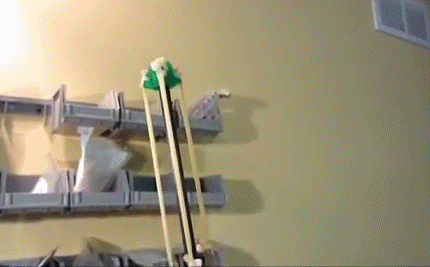

Jeffrey Kerr (aka Lobo CNC) is on a mission to make the cheapest DIY 3D printer possible.
His current design is the Delta-T v0.3 a non-Cartesian 3D printer in the delta style that uses only a handful of easily sourced parts, including: acrylic, aluminum tubing, stepper motors, an extruder, fishing line, rubber bands, bolts, a controller board, and aluminum spools. The “T” in the Delta-T name stands for tensegrity, a nod to the fact that the drive system of the printer is held together under constant tension.
There are no linear bearings, belts or pulleys — the extruder carriage is simply suspended (under tension) from six fishing lines. According to Kerr, the entire printer could be built for less than $150.
“Another interesting aspect of the Delta-T design is that almost all the precision of the drive system is encompassed in accurately locating six holes in the top plate and six holes in the carriage plate. Most every other dimension in the printer does not have to be very accurate. I laser cut these critical holes in my prototype, but with a standard computer printer, you can make a paper template and use it to center punch the location of these critical holes.”

Another interesting aspect of this design approach is the potential to inexpensively scale it up. “People have talked about making this type of printer with the lines (or in this case, cables) anchored in the corners of a room,” Kerr told me over email, “So far as I know, though, my prototype is the only working printer of this type.”
Once Kerr is done tinkering with his design, he plans on making the plans and assembly instructions open source. Until then, you can keep on top of his updates over on the RepRap forum or checking in on Kerr’s YouTube channel.
ADVERTISEMENT






